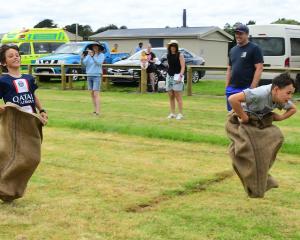
The protected population of New Zealand's largest and most threatened lizards - which are only found in inland Otago - has increased markedly in the past three years, Conservation Minister Steve Chadwick announced in Wellington yesterday.
"This is the first time on mainland New Zealand that there has been such a dramatic recovery in a critically endangered species."
The population of Otago skinks increased from 37 to 72, and grand skinks from 32 to 46, between 2005 and 2008.
In contrast, a control population outside the predator control protection area declined from 78 to 11.
A major outcome of the grand and Otago skink recovery programme was that the possibility now existed for their threat classification to be revised downwards - from nationally critically endangered to nationally endangered - within about a decade, Ms Chadwick said.
"The field techniques, knowledge and technology developed by the team are of international significance. And in this country, that knowledge is transferable to other endangered species."
Before the work, the fear was the skinks, which were extinct over 90% of their former range, would within a decade dwindle in numbers to a point where they would never recover.
"I'm thrilled to be able to announce today that, thanks to the work of the Otago conservancy's grand and Otago skink recovery team, that dire prediction should not become a reality.
"That's because a conservation research by management project that began in 2004 has proved successful."
Ms Chadwick announced a captive breeding programme for Otago skinks was being established at Wellington Zoo's specialist conservation unit.
It would also involve Doc and private breeders.
The zoo management programme was developed to protect the genetic diversity of both species and as a backup in case they suffered a catastrophic event in the wild.
Recovery team leader Dr James Reardon said the results at Macraes were exciting because the team only had time for "one crack" at saving the skinks - if the population had not recovered, the species would have become extinct.
"It's a enormous relief for me and the team of dedicated conservationists and ecologists working with me."
The programme first sought to identify the critical agents of decline, which included predation by mammals such as cats, stoats, ferrets and weasels, and then remove them by creating a "mainland island".
Two mammal-proof "exclosures" of 22ha and 11ha were erected and, in the surrounding 1200ha open area, 42km of trap lines protected a central 50ha area.
More than 3000 predators were removed in three years and a ground-breaking, non-intrusive photo monitoring programme was developed to detect changes in the population.
Genetically distinct skinks had been found in the Lindis and Hawea areas and those populations were also in "peril" and likely to become extinct, Dr Reardon said.
"The major priority is how to extend management to safeguard several species in the west as well."












